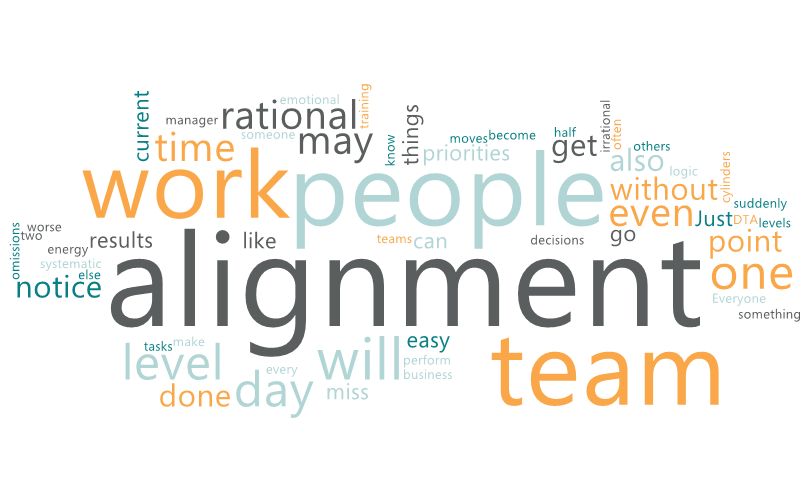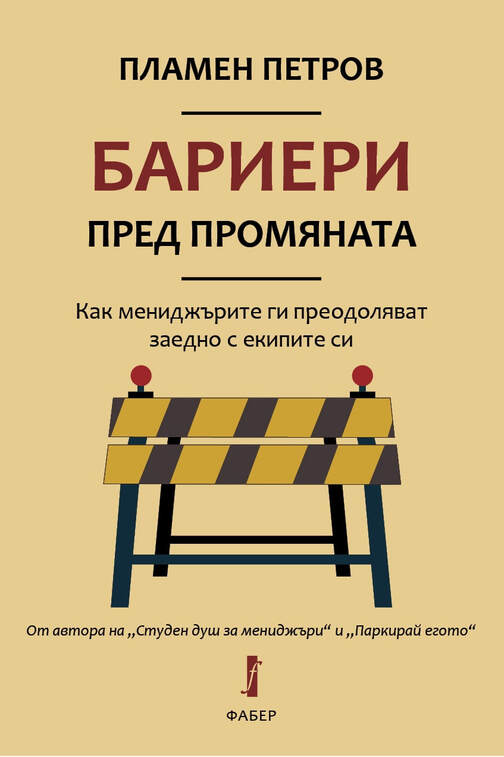|
"Discipline is the mother of victory."
Alexander Suvorov The daily team alignment (DTA) makes sense to be done regularly at two distinct levels: - emotional level–it shows how people are feeling and what is the energy level in the team; - rational level–it shows the current priorities, the workload levels, and the business-critical tasks that should be turned around by the end of the day. That's it. Almost no team fails because one-day things didn't go well. Team failures, and successes, result from systematic and constant actions that are repeated over and over again. One such action that should be done every day is the alignment of the team. Alignment means that all people on the team have the same understanding of the current priorities. Everyone should know what is expected of him, respectively, what everyone can expect from others. The DTA (Daily Team Alignment) is straightforward to do. And for the same reason, we often miss it. Just because it's easy. And because the results of one or two omissions can be challenging to notice. But the same results begin to be seen very clearly when the omissions become systematic. Here is a very suitable analogy for going to the gym. If you miss a workout, you won't notice much difference. You may even feel better because instead of training, you have rested or done something else. It's the same with the office's alignment - if you miss once or twice, there is not much difference in the work; even people have freed up a little more time to catch up with the whole flow of work waiting for them. Both with the training and daily alignment - the problem is not in one omission in the month. The problem is when it becomes a leak every week and then even another day. And notice that this happens gradually - little by little until at some point, it turns out that the team hardly gets together and everything is done on the go. The work will not stop suddenly. But it will reach a turning point where it will suddenly get worse. This will be the point where a few people are a little overwhelmed, a little more nervous, and a bit too tired. Just a little is enough to get to where the more the work - the worse the situation - the more mistakes are made, there is duplication of work, some people more emotional reactions, others even go to the hospital. This scenario is not apocalyptic but only realistic. As soon as the people in the teams started slapping each other on the forehead and wondering where they had gone wrong, it was time for a break and a rational analysis. It is not a time to jump to conclusions. Here comes the place for these little things that are easy to do. But it's easy not to, just like the daily alignment of the team. This alignment is on a business and rational level and a purely human level, without holding hands and singing kumbaya, but only connecting with people. Beyond the roles and tasks, they perform. Alignment also includes the distribution or redistribution of current work. You may be surprised, but you probably find that you have people who can do something but wouldn't want to in these alignment meetings and people who can't or haven't tried but want to. In the daily alignment, people will get to know not only their work and colleagues but also themselves. They will understand that the rational laws they have studied in universities rarely work at the micro-level in their teams. For example, economic logic does not suggest that a manager would prefer to change position and work more for less money. But it happens. It happens often. Irrationality is not only available to the people you work with. It is also available to you. Think about how many of your career moves were rational and how many were completely irrational and without any sound logic. And more importantly, what resulted from both types of decisions? You may only now realize that the best moves in your career have been entirely irrational but correct. But you are only judging by today's results. One typical disadvantage of daily alignment is that it becomes a routine and does not get to the conversation's heart. At one point, people may perform the alignment like a pro forma, and the entire team may suffer. Of course, this cannot happen without the "assistance" of the manager of this team. So, if you notice a sluggish or pro forma presence - there is no room to ignore it. Address it directly and with respect, without jumping to quick decisions. Alignment is also the time when, besides priorities, people align their energy. They become enthusiastic and recharged with good mood and excitement for the entire day. There will be days when someone, or even yourself, is at 50-60% of your capacity. Do not sweep things under the rug - if someone is not in a resourceful state to do their job—make some changes for the day. There is no sense to work at half speed. It's like driving a car with half-cylinders. When you make sure the cylinders and everything else is in order, it's time to race.
1 Comment
|
Архиви
July 2024
|
__________________________________________
Copyright © 2011-2024, Equinox Partners Ltd. All rights reserved.
Copyright © 2011-2024, Equinox Partners Ltd. All rights reserved.


 RSS Feed
RSS Feed


